Italian utility in hot water for draining a picturesque lake to send water to Rome
By Gabriele Di Donfrancesco | December 9, 2023
 The village of Anguillara Sabazia on Lake Bracciano. The oldest relics discovered in the area date back 8,000 years. (Federico Ambrosini)
The village of Anguillara Sabazia on Lake Bracciano. The oldest relics discovered in the area date back 8,000 years. (Federico Ambrosini)
Francesco Falconi stood at the edge of Lake Bracciano, a volcanic depression filled with crystalline water and surrounded by bucolic wooded hills and ancient Italian villages. “This is where I used to dive into the lake,” Falconi, a lawyer who grew up in one of those villages, says, pointing to a rock on the lake’s periphery. Jump from there today, and you would probably wake up in the nearest emergency room.
In 2017, Lake Bracciano, a basin of around 22 square miles, faced an existential crisis. It started to dry up as a local utility, the Acea Group, diverted its waters to quench the thirst of the Italian capital during a severe drought. Residents of the surrounding villages were able to stop the water company from draining the lake, but the damage was done. Habitat and ecosystems were lost, and the lake has never fully recovered. Now, they are bringing the company to court for environmental crimes.
The trial could set a precedent throughout Europe, by creating more public awareness about environmental crimes that involve water use and drainage, a long-overlooked issue, in addition to water pollution. It could inspire other small communities to fight to safeguard their natural havens and force big cities to find new solutions to deal with their water needs.
The Lazio region, where Rome and Lake Bracciano are located, is rich in lakes, rivers, and pristine springs, but frequent droughts, climate change, and terrible water management are creating a recurring state of crisis.
Lake Bracciano serves as an emergency water reservoir for Rome. The city meets two-thirds of all its water needs by tapping into the Peschiera springs at the base of Mount Nuria. These founts are very resilient to occasional droughts. Other sources are smaller and dry up faster, though in general, all the regional water sources, including Lake Bracciano, are steadily declining due to climate change.
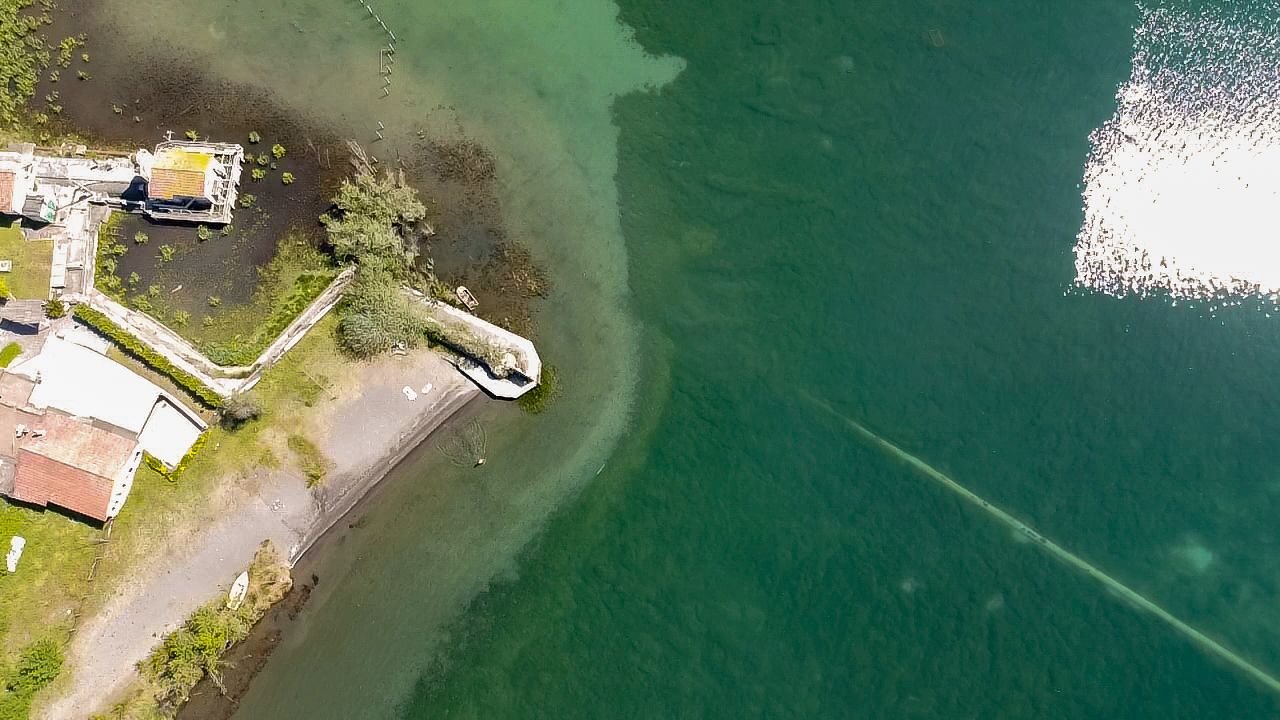
In the first six months of 2017, a very dry year, the elevation of the water surface of Lake Bracciano fell by five feet as Acea kept tapping into the basin. It is normal for the surface of the lake to fluctuate between a height of 535 and 538 feet above sea level, but that summer it plummeted to 530 feet. It might seem a small change on paper, but five feet over 22 square miles adds up to a lot of water; the loss was enough to disrupt nearly everything around the lake. Ferries could no longer dock at piers. Stairs had to be built for people to disembark because of the shallow waters. And even after Acea stopped collecting water, Lake Bracciano kept shrinking. It had lost its normal equilibrium.
In 2018, the lake reached its nadir. The water surface fell by six-and-a-half feet in total. The shoreline retreated by a mile. The sight of the shoal between the lake’s normal shore and its new, shrunken state was ominously reminiscent of the Aral Sea, the enormous lake lying between Kazakhstan and Uzbekistan, which almost disappeared due to the deadly combination of increased human thirst and climate change.
“The lake never goes down [below] a certain threshold,” Graziarosa Villani says. Villani is the president of the committee of local citizens that managed to save Lake Bracciano, thanks to the quick mobilization of scientists and lawyers. The group pressured the regional government, which stopped the draining. Acea appealed, but the “Cassazione,” the highest Italian court, upheld the decision.
During the trial, the people of Lake Bracciano were up against two giants: Acea, the local private company providing water to the region in a de-facto monopoly situation, and the city of Rome. But the law worked in their favor. According to its permits, Acea could draw from Lake Bracciano as long as the water surface did not drop under a certain level, to ensure that the basin did not enter a dangerous downward spiral. “But Acea did not stop there and went even further,” Villani says. “Who knows what would have happened without our intervention?”
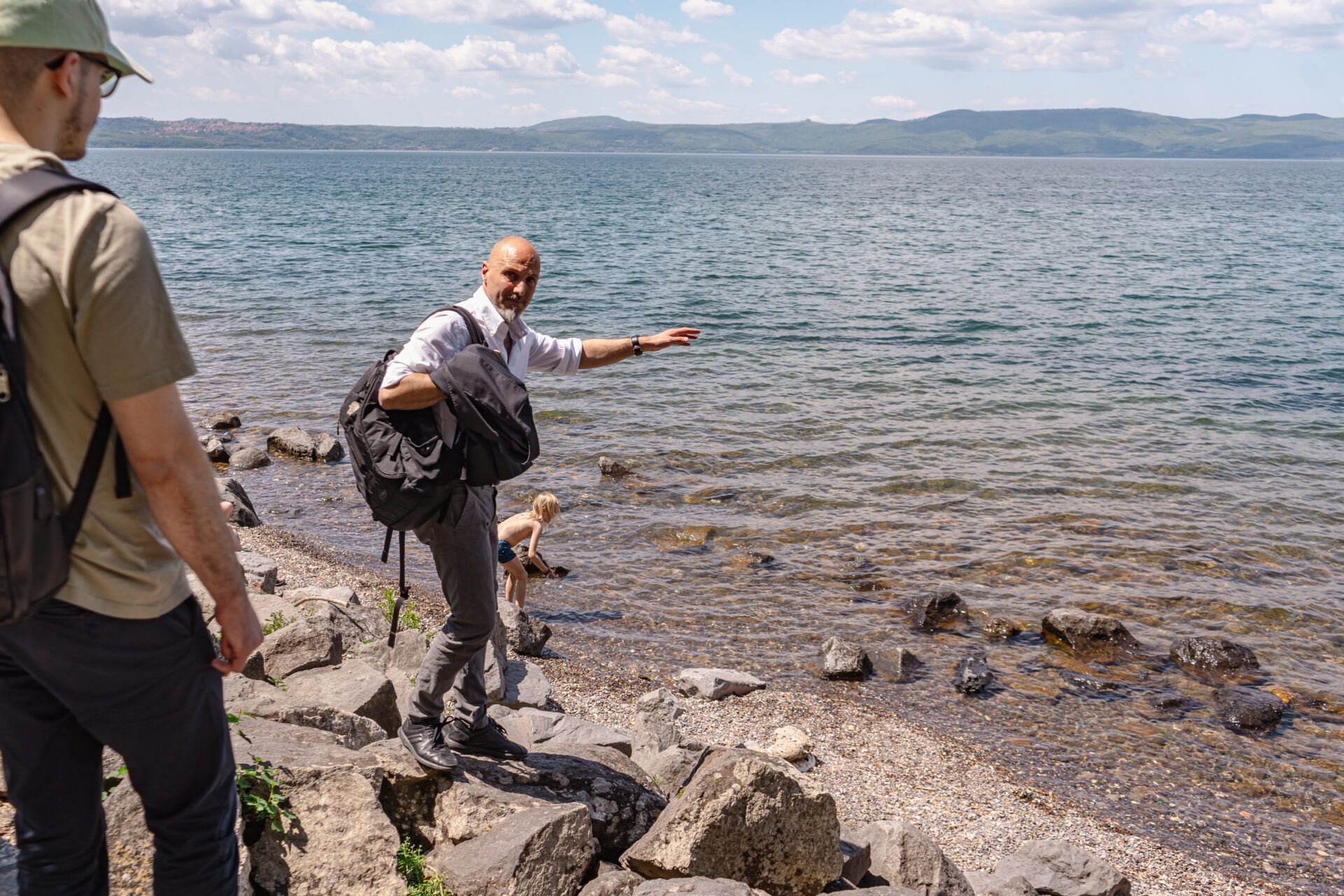
Villani was represented in court by Falconi, a lawyer raised in Anguillara Sabazia, a historic village of 19,000 perched on a hill that slopes gently into the lake. Falconi now represents Villani and her group in a second trial born out of the first complaint. In Italy, private citizens can file a complaint with the authorities to start a criminal investigation that might lead to a criminal trial. Now, deputy public prosecutor Delio Spagnolo is charging the chairman of Acea's board, Paolo Saccani, and seven other board members, with causing an “environmental disaster” by negligently collecting more water than permitted.
“If it wasn’t for our complaint, the public institutions would not have started any investigations by themselves,” Falconi explains.
Under Italian law, “environmental disaster” is a type of crime that applies to individuals, organizations, or companies that cause an irreversible or conspicuous alteration in the balance of a protected ecosystem. It carries a maximum sentence of up to 15 years and pecuniary sanctions.
This is the first time in Italy—and, as far as I am aware, in Europe—that a company has been sued not for polluting the waters, but for draining them. Winning the case could set an important precedent. It would show how communities can find a way to reinforce water protection policies to keep their basins healthy for future generations.
Climate change will make what happened to Lake Bracciano a more common problem in Europe, and around the globe. That is why this second trial is, for Falconi, “incredibly relevant.”
Lake Bracciano has a peculiar status under EU and Italian law. Along with the nearby smaller Lake Martignano, it is part of a regional natural park. It is also a special protection area and a special area of conservation according to EU environmental directives. It falls into a network of protected European sites called Natura 2000.
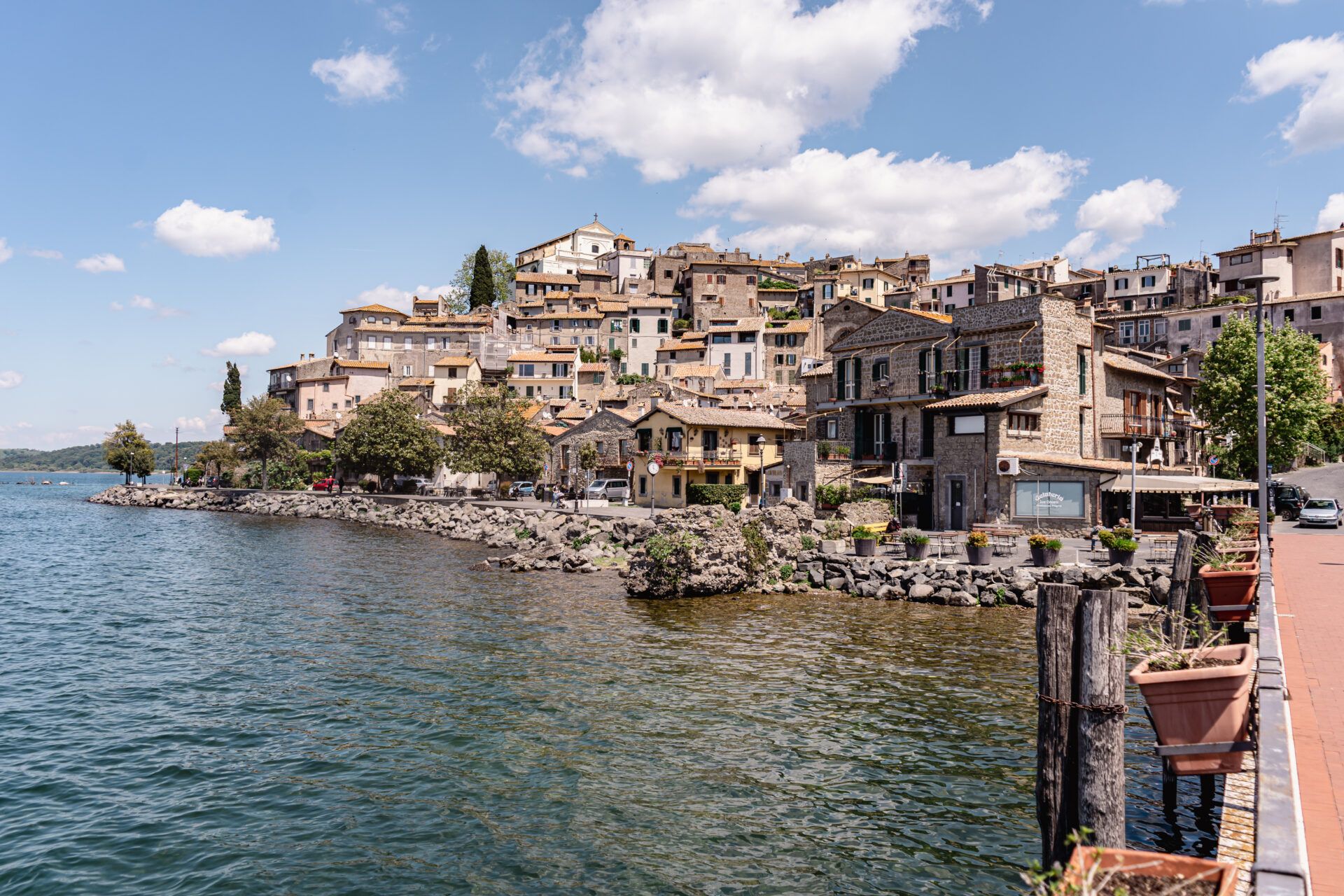
The EU directives and the Italian law all acknowledge the need to keep water bodies “in good health.” This concept involves respecting their “ecological flow.” The water level should be high enough to ensure biological life can continue. But the EU cannot inspect water bodies and leaves the onus of environmental monitoring to its member states. Though Lake Bracciano is a Natura 2000 site, the EU is not able to directly help protect or defend it.
Acea was once a municipal company but has since gone public and is now only partially owned by the municipality of Rome. Beyond water distribution, the company also operates in the energy and waste management sector. The board of the company now includes representatives of companies like Suez, a French multinational. Acea runs contracts in other parts of the world as well.
“Over the years, Acea did a great job cleaning the lake from the sewage of nearby towns,” Falconi admits. Ironically, the company that contributed to keeping Lake Bracciano clean has almost destroyed it.
Even though the local community acted quickly, the damage to Lake Bracciano remains.
Mattia Azzella, an ecologist who testified in court about Acea’s alleged wrongdoing, says Lake Bracciano has irreversibly lost part of its rich ecosystem. The lake might recover over decades, but it would be to a different equilibrium. Other species will take over the ecological void left by the aquatic plants and algae that naturally filtered the lake, keeping it clean. Since these species can only survive at certain water heights, they were virtually destroyed when their delicate habitats disappeared with the water.
“The ecosystem did not collapse, but it got severely damaged,” Azzella says.
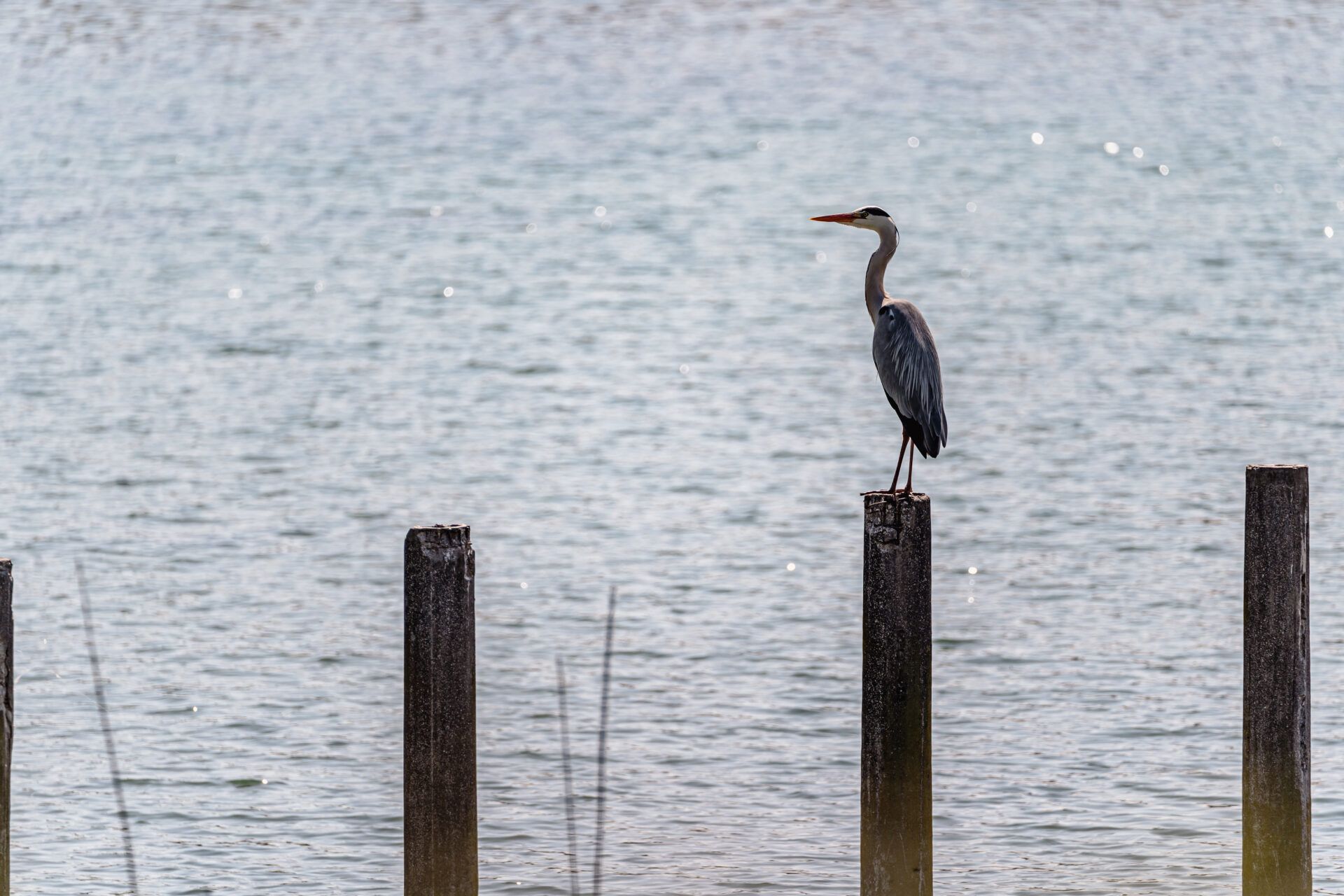
The last decade has been hard on Lake Bracciano. Temperatures are rising in the region. Seasonal droughts are getting longer. This type of volcanic basin depends on rainwater, and until recently, Lake Bracciano had been resilient. Its water levels had remained stable over the years. Until Acea broke the spell. “That is why the company should have protected the resource and not wasted it,” Azzella says.
According to its own data, Acea loses large percentages of the water it collects and distributes through leaks in its distribution network. In 2017, it leaked up to 45 percent of all the water in the province of Rome. Today, that number is still well over 30 percent. No third party or regional authority has ever checked the accuracy of the figures released by Acea.
The people of Lake Bracciano argue that repairing the leaks alone could solve the recurrent water crisis and ease the pressure on the regional water sources. “You cannot think anymore that there will always be new water. It might never come back. It has been six years, and the lake has not recovered,” Azzella says.
Today, the lake is still three feet lower than its past healthy average. “It might never revert to its previous equilibrium,” explains Giampietro Casasanta, a researcher at the Italian National Research Council and a resident of Anguillara. Casasanta says his research shows that such a sudden water loss from the lake would not have occurred due to natural climatic and weather fluctuations alone.
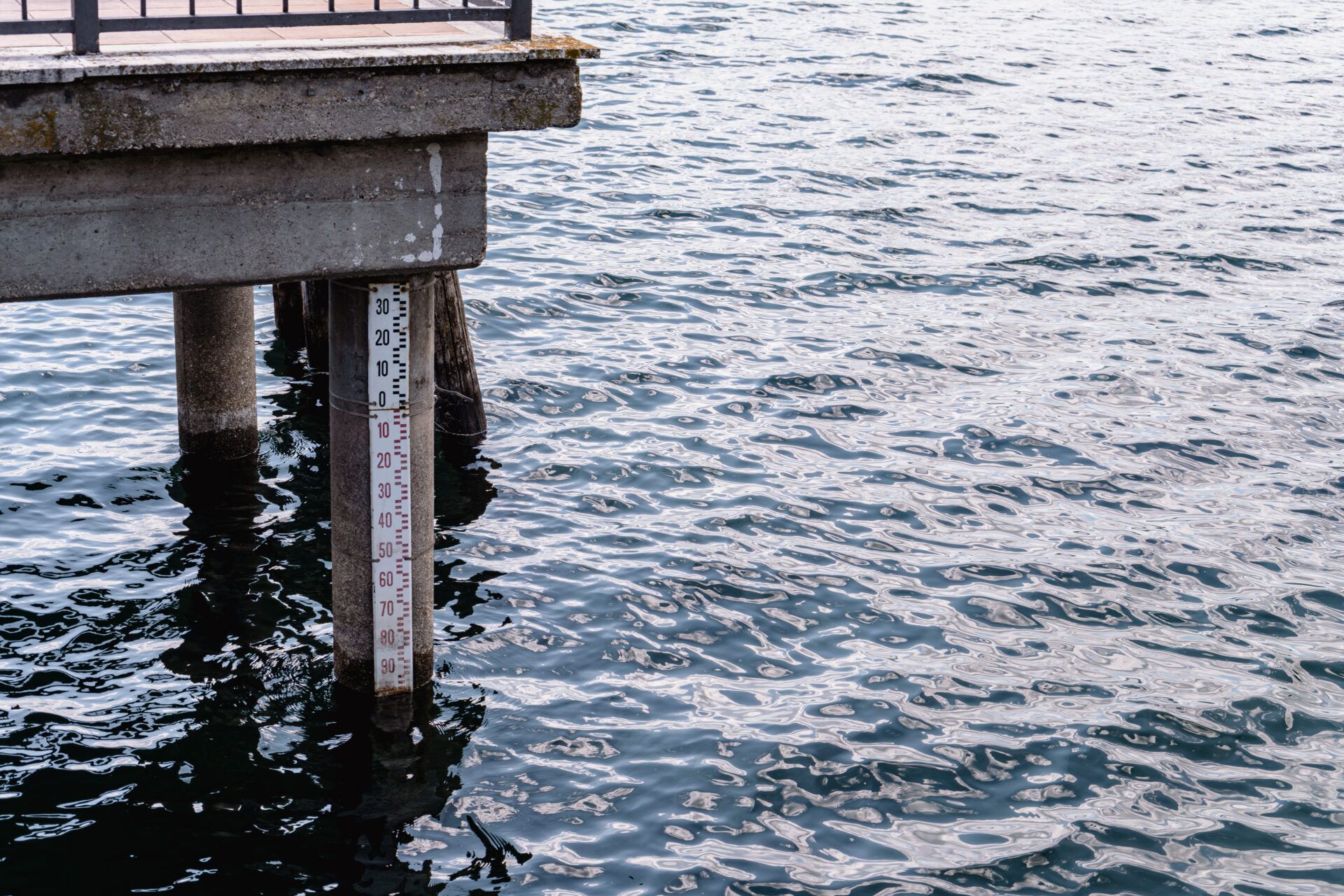
In Italy, data about water levels is often publicly available. Indeed, the docks of Lake Bracciano have physical water scales. Historical data about precipitation are uploaded online as part of a grid of rain gauges connected to the SCIA, the National System for the Elaboration and Diffusion of Climate Data.
Acea knew that the basin was suffering from the effects of climate change; after all, it had released public documents in the months before the crisis showing those effects. But after the water levels of Lake Bracciano became a public controversy, the company downplayed the issue, even accusing the owners of gardens and structures along the shoreline of causing the crisis by “stealing” water. They were acquitted in court.
By Italian law, the Ministry of Environment and Energy Security is the only institution allowed to ask Acea for compensation, but it has refused to do so. This new trial could result in a fine for breaking environmental law, but it would not formally constitute compensation for the environmental damage.
The Italian legal system is extremely slow. The Acea criminal trial is predicted to last several years. It began in May, and in November it entered the hearing stage, with both parties presenting scientific evidence. The company is expected to trivialize the damage done to the ecosystem in an attempt to reduce its liability. However, the community of Lake Bracciano feels that science is on its side. Community members hope their work will inspire other communities in Europe to follow their steps in defending local waters.
“If Acea loses the case, it will have enormous consequences,” Falconi says. “It will set the legal precedent for other communities to fight.”
Editor's note: This article was developed with the support of Journalismfund Europe.
Together, we make the world safer.
The Bulletin elevates expert voices above the noise. But as an independent nonprofit organization, our operations depend on the support of readers like you. Help us continue to deliver quality journalism that holds leaders accountable. Your support of our work at any level is important. In return, we promise our coverage will be understandable, influential, vigilant, solution-oriented, and fair-minded. Together we can make a difference.
Keywords: Italy, climate change, complex water problems, drinking water, drought, environmental crisis, water crisis, water policy
Topics: Climate Change









I’m curious about how much water goes to waste in Rome due to over 2,500 public water spigots (nasoni) than spout water 24/7/365. Surely they could be retrofitted with faucets to only provide water solely on demand